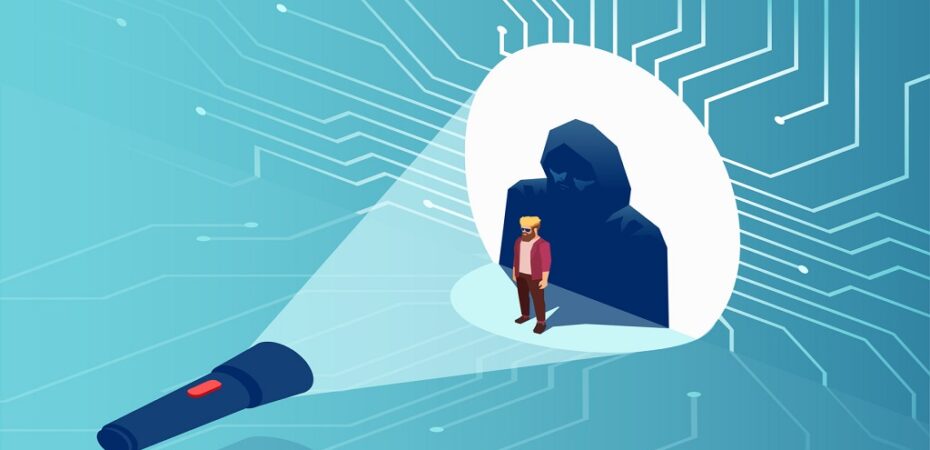Technologies and IT solutions penetrate deeper into the processes of companies, regardless of their size. Data is a key asset for businesses, so protecting, preserving, and using it wisely is a priority for any business. If you want to know about data threats and are looking for a reliable cybersecurity compliance services provider, then this article is for you.
What Is Business Information Security?
Business information security is a set of organizational and technical measures aimed at protecting and preserving information, systems, and equipment used to interact, store and transmit this information.
The more effectively information security is provided, the better the company’s data is protected from various influences. There can be:
- internal or external;
- accidental or intentional.
In a global sense, the nature of the negative impact does not matter. It is important what consequences a company may face due to the leakage, loss, unauthorized change, or use of corporate data. That is why information security is a critical aspect of business protection and plays a key role in business continuity strategies. The proof of the company’s comprehensive concern for security is cybersecurity compliance.
Information Security Threats
Any company can face various information security threats. According to their origin, they can be divided into several types:
- Natural. This category of threats includes natural disasters, adverse weather conditions, and various cataclysms – floods, hurricanes, tornadoes, etc. Companies can defend against some of them. For example, a lightning rod can help you avoid a potentially dangerous lightning strike. However, serious natural disasters are more likely to cause damage.
- Artificial. These are man-made threats. Artificial threats, in turn, are divided into unintentional and deliberate. The first type includes threats arising from human error or accident. This type includes attacks by intruders, “orders” of competitors, and sabotage of offended employees.
- Internal. This is a type of threat that occurs within a company’s information infrastructure.
- External. These are threats that came from outside and originated outside the information infrastructure.
There is another classification of threats – by nature. For example, passive threats do not change the content or structure of information, but active threats are quite capable of doing so. Such threats include, for example, well-known encryption viruses.
Deliberate threats are considered the most dangerous. An attacker trained and armed with tools (whether a hacker or a former employee) can sometimes do more harm than a natural disaster.
Tools For Organizing Information Security

Various tools are used to ensure data security. These can be specialized devices, software, or some organizational measures aimed at protecting information.
All means of protection are divided into 4 types according to the method of implementation.
- Hardware. This category includes special equipment or devices whose task is to prevent unauthorized access to data and penetration into corporate IT infrastructure.
- Software. This is a special software with which you can protect, securely store, and control data.
- Hardware and software. These are specialized devices with software on board.
- Organizational. This is a set of organizational-legal and organizational-technical means and measures.
Organizational Arrangements
Today, there are many measures available to companies, both technical and organizational, that will help to significantly reduce the risk of data leakage. Let’s list the basic ones – even small companies should not forget about them, which often think that there is nothing to steal from them.
1. Implementing security policies.
The implementation of business information security policies should affect not only the protection of the data itself but also the accounts that allow access to them.
2. Implementing the principle of least privilege.
Employees should only have access to the data they need on a regular basis to complete work tasks. This significantly reduces the risk of data leakage due to the human factor or the carelessness of an employee.
3. Corporate password policy.
It is mandatory to disable or change compromised credentials. In addition, you can implement general corporate password requirements (for example, a certain complexity/length or the implementation of multi-factor authentication) and approve the requirement to change data every fixed period – for example, once every 3 months.
4. Employee training and testing.
Methodical work with employees and regular testing of their knowledge will help save you from sophisticated methods of social engineering and phishing. Only in this way can you increase the chances that an accountant or manager will not fall for the bait of an attacker.
Variety of Technical Means of Information Protection

Recently, various kinds of software solutions for information security have gained the greatest popularity. There are several reasons for this:
- the ability to quickly and easily update solutions;
- do not lose in terms of efficiency to hardware;
- they are easy to replace or upgrade.
Today, there are software solutions for almost all occasions.
- Antivirus. Antivirus software helps you protect your data from the latest virus threats and malicious code. The company can choose the best antivirus based on individual conditions – the type of environment used (traditional or cloud), the type of protected devices, the available budget, and the most convenient billing model.
- DLP (Data Leak Prevention). These are tools aimed specifically at preventing data leaks. These tools can:
- control communication channels, network protocols, devices, storages, and even the activity of company employees (take screenshots of screens, capture keyboard input, provide access to the desktop, and record video from the screen); Meanwhile, digital asset management software centralizes and streamlines the curation, storage, and retrieval of these digital resources, enhancing security and efficiency, allowing for greater control over a company’s digital assets.
- work with security policies;
- generate reports and much more.
- Cryptographic tools (DES, AES). Provide data encryption to prevent unauthorized access to them.
- Firewalls. These solutions filter and block unwanted traffic as part of providing access control to the corporate network. They are implemented both in the form of software and hardware (a physical device with firmware), and purely software tools.
- SIEM. These are the company’s information security monitoring and management systems. So, these are special software solutions designed for comprehensive data security. SIEM solutions collect information about all information security events from sources involved in the data protection process – antiviruses, intrusion prevention systems, firewalls, and others. After collection, all information security events are analyzed. SIEM solutions allow you to see a complete picture of what is happening with company data, and identify potential failures, malicious attacks, and other threats.
- Password Manager. An integral part of information protection includes the use of a password manager. This specialized software solution securely stores and organizes passwords, generating strong and unique ones for different accounts. By centralizing password management, these tools enhance overall information security, reducing the risk of unauthorized access and potential data breaches, thus contributing to a robust defense against various cyber threats.
Final Thoughts
Information security is an ongoing and dynamic challenge as threats and technologies are constantly evolving. Therefore, successful companies must constantly update their information security practices and invest in protecting their information. If you are looking for a reliable provider of cybersecurity compliance services, we recommend that you pay attention to UnderDefense. The company provides modern data protection solutions and provides support in security compliance.
Read also:
- Converting or migrating an Access database to SQL Server
- What is Data Center Proxy, and How Does it Work?
- Benefits of Using Two-factor Authentication to Protect Your Data Online
- How to Fix Your Organization’s Data Cannot be Pasted Here?
- Secure Data Rooms for Businesses with Unparalleled Protection
- 3 Best Data Rooms For Successful Businesses
- An Overview of the Data Discovery Process

